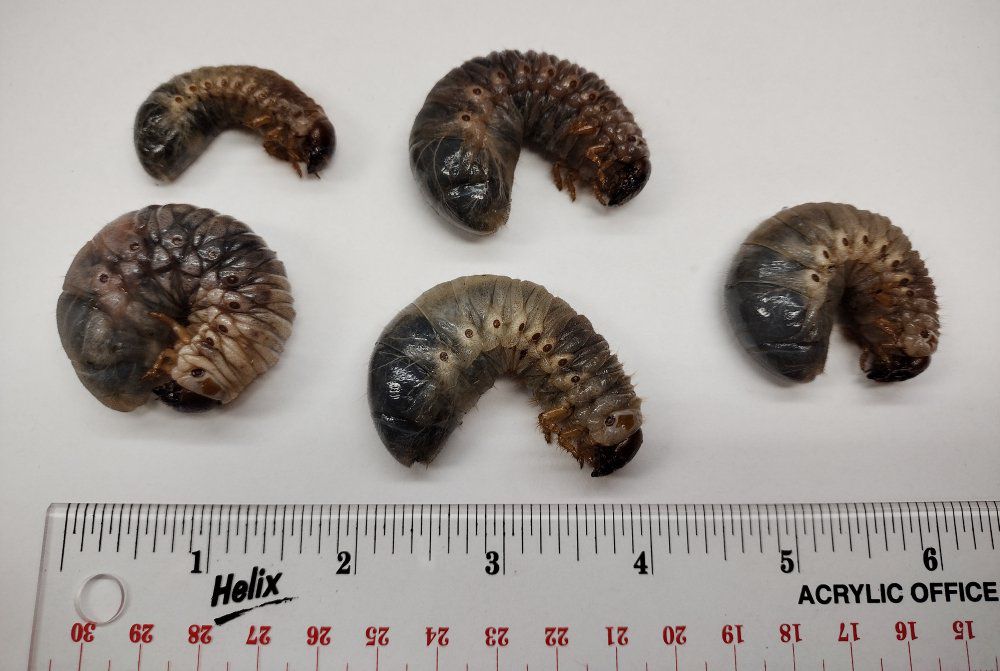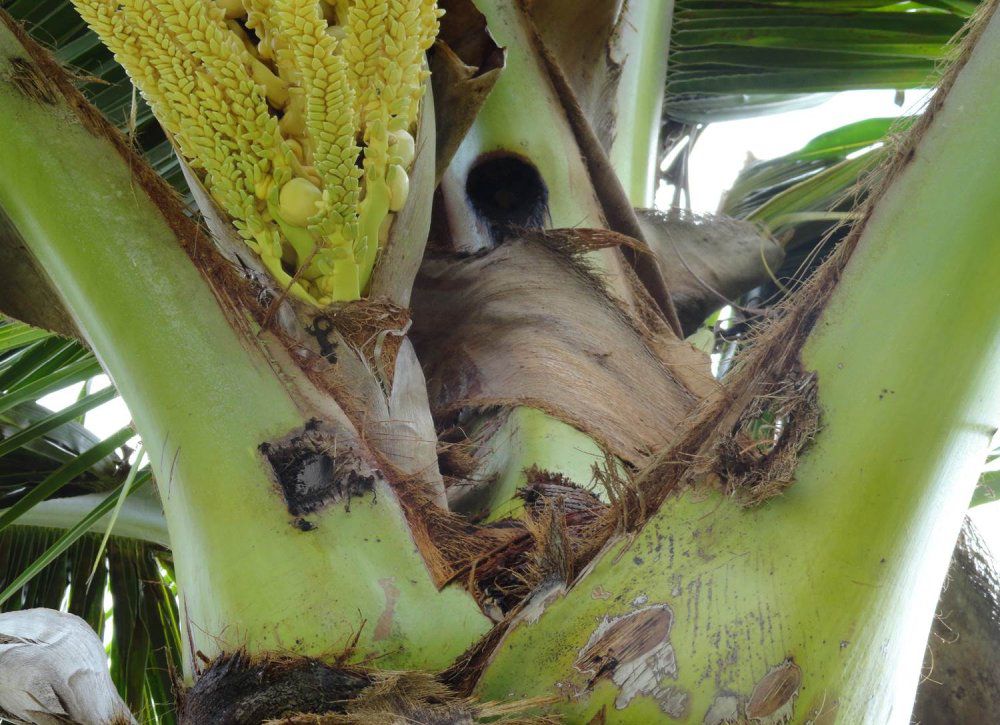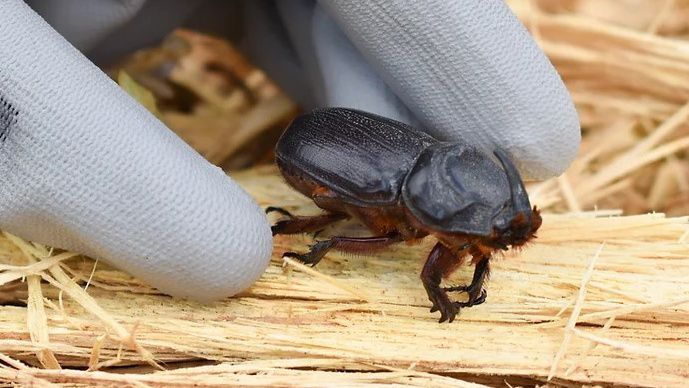HONOLULU — Three live adult coconut rhinoceros beetles were recently found in traps in the Waikoloa area on Hawaii Island, according to the Hawaii Department of Agriculture.
This is the second time CRB have been detected on the island since October 2023, when six grubs (larvae) were found in a decaying palm tree by a Waikoloa Village resident.
Several state agencies have set up over 80 detection traps on Hawaii Island routinely checked by HDOA Plant Pest Control staff and members of the Big Island Invasive Species Committee, along with additional traps set up by the U.S. Department of Agriculture and community groups. The traps can detect CRB, but do not reduce the population.
On April 15, a beetle was detected in a camera trap at the West Hawaii Landfill by the University of Hawaii’s Coconut Rhinoceros Beetle Response, which developed the camera traps that routinely takes pictures and sends images through a cell signal.
Two adult CRB were found in traps at the Waikoloa Dry Forest Reserve on April 22.

On Tuesday, staff from the Plant Quarantine Branch on Oahu flew to Hawaii Island to confirm the locations of where the beetle was found and to conduct surveys.
“Unfortunately, detections of live adult beetles are an indication that CRB are breeding in the Waikoloa area,” said Hawaii Board of Agriculture Chair Sharon Hurd in a news release. “We ask that residents pay special attention to mulch and green waste that serve as optimum breeding conditions and report any suspected CRB or suspected CRB damage in palm trees. We need everyone’s eyes.”
Before the April CRB discoveries, HDOA PPC and the CRB Response Team had already scheduled surveys and treatments for early May. Additional traps will be set up, including a new generation of smart traps and plans are in the works for a new method of treating palm trees.
Hawaii Island inspectors from the Plant Quarantine Branch are on alert for incoming mulch or compost. Any such material transported from Oahu to any neighbor island must be heat treated or fumigated prior to shipping to kill CRB.
After receiving a crisis emergency exemption from the U.S. Environmental Protection Agency, HDOA’s Pesticides Branch will begin its use of cypermethrin found to be effective in killing CRB, according to the release. The EPA has authorized its use only in the counties of Maui, Kauai and Hawaii.
Residents on Maui, Hawaii Island and Kauai are asked to report suspected CRB to the state’s toll-free Pest Hotline at 808-643-PEST (7378). Plant quarantine inspectors in Kona will provide a follow up and instructions for West Hawaii residents calling in. Find information on CRB on the CRB Response website.

CRB were first detected in the state on Oahu in December 2013 at Joint Base Pearl Harbor-Hickam, where they have spread to other areas of the island.
The destructive beetle was discovered for the first time outside of Oahu on Kauai in May 2023 near Lihue Airport and a dead beetle was found among compost bags originating from Oahu at a big box store on Maui in September 2023.
CRB are a serious threat to palm trees, primarily coconut palms. According to the HDOA, adult beetles bore into palm crowns to feed on the sap. New, unopened fronds damaged in this way may break and fall unexpectedly when fully opened. Fungal and bacterial pathogens can also attack the wound caused by CRB, killing the tree as well. After a CRB attack, tree mortality can be anywhere from 10% to 50%. Dead trees can also become a safety hazard when a tree falls because of a rotted trunk.
The beetles are a major pest in India, the Philippines, Palau, Fiji, Wallis, Nukunono, American and Western Samoa, and Guam. How the beetles arrived in Hawaii is still unknown.
Sarah Yamanaka covers news and events for Spectrum News Hawaii. She can be reached at sarah.yamanaka@charter.com.



